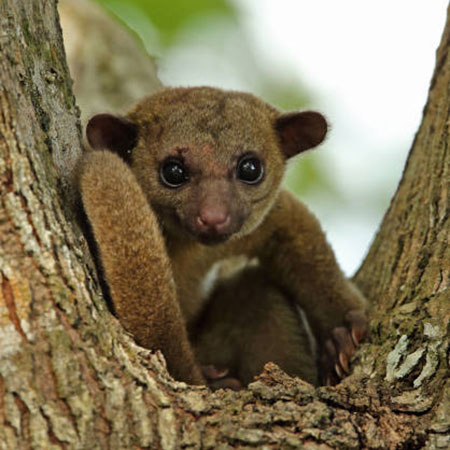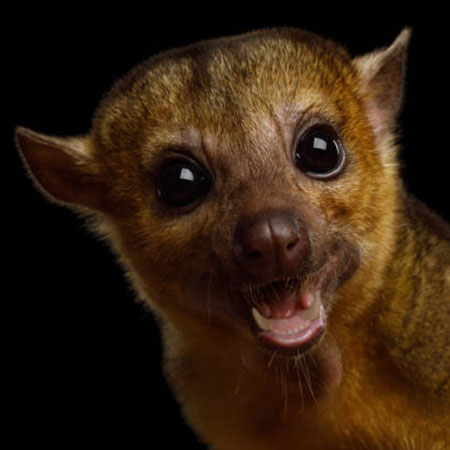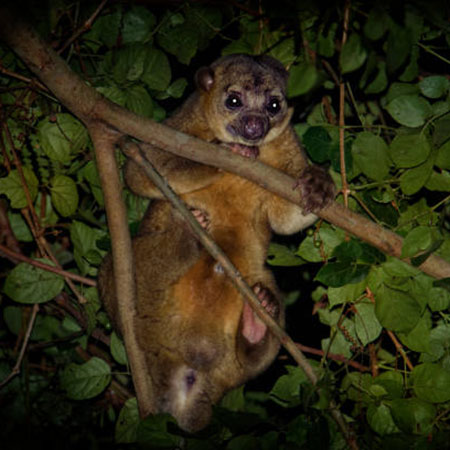The kinkajou, also known as the “honey bear,” is a nocturnal mammal with a long, prehensile tail and a curious, playful demeanor. Native to tropical rainforests, these arboreal creatures are expert climbers, spending most of their time in the treetops. Their golden-brown fur, large eyes, and round ears give them a charming and distinctive appearance.
Despite their name, kinkajous are not bears; they belong to the same family as raccoons. Their love for nectar, particularly from flowers, makes them important pollinators in their ecosystem.
IUCN Status: Least Concern
While kinkajous are not currently endangered, deforestation and the exotic pet trade pose significant threats to their populations. Efforts to preserve their rainforest habitats are crucial for their long-term survival.



